Reading Time: 6 minutesNorthern Pike are among the most exciting freshwater species an angler can pursue. They’re widely distributed across North America and Europe, and their numbers are very strong. They also offer some of the most explosive strikes of any fish out there. Even smaller “hammer handles” are fun to hook.
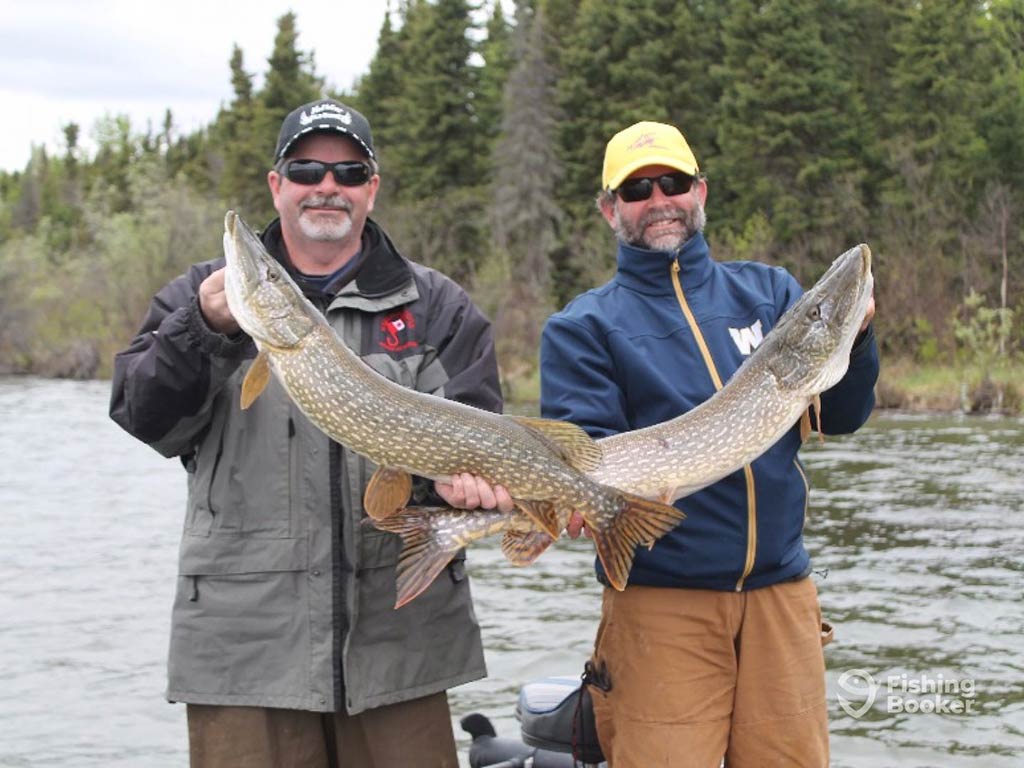
Photo courtesy of Kenanow LodgeYou can catch Pike with a ton of different methods. Lures, flies, and baits all factor into each Pike fishing equation. What you choose is a matter of personal preference, and you’ll end up selecting your baits based on your own experience. With that being said, it’s always good to know the basics, so here’s a complete guide to the best bait for Northern Pike.
Understanding Northern Pike Diet and Behavior
The aggressive strikes and predatory nature of Pike lead many anglers to believe they always need lures that are big and active. Sometimes, making noise is the best bet, but Pike are far more nuanced than we tend to think.
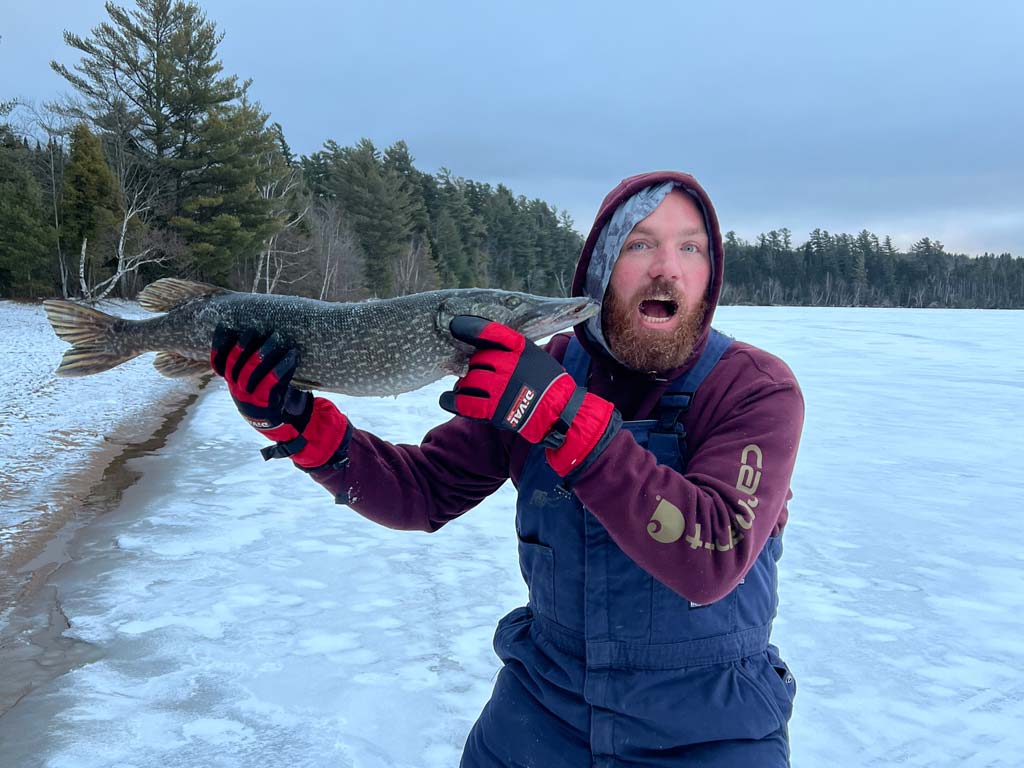
Photo courtesy of Battle Fish ChartersFor the most part, they’re ambush feeders who hide or lurk while waiting on unsuspecting prey to come within range. Prey can be anything from other fish to frogs, mice, and even birds. In this sense, Pike are not selective but rather opportunistic. They’re moody, however, and some days call for the big guns while others require a more detailed touch.
Understanding the available food sources in the environment you’re fishing in is the key to unlocking the best baits or lures. You might find a high prevalence of worms or an abundance of small shiners. Pay attention to what they’re eating and do your best to imitate or use the local fare.
Pike’s feeding habits also vary based on climate and season. Fishing close to winter months in a cold climate can leave fish suspended. They’ll still eat but you’ll need to get very close with your depth and presentation. At other times, they’ll be sunning in the shallows and you can sight fish directly to them while watching aggressive follows and grabs. Adjust your presentation to match the conditions and activity levels.
Best Baits for Your Pike Fishing Trips
There are a ton of options for Northern Pike baits and lures! But you don’t need to have every single option in your arsenal for a successful day on the water. I recommend choosing 2-3 options to start with and test them in different conditions. Learning to read the water and find the Pike is your first and most important task.
After gaining some familiarity with the species and the local waters you fish, dialing in the best baits will be easy. Learn from other anglers in your area, ask tackle shops, and experiment to get to grips with which baits work best. Here are my favorites:
Cut Bait (Dead Bait)
The convenience of cut bait is ideal for anglers who don’t have the time to collect live bait on every outing. Cut bait are simple strips of meat that are typically cut and frozen - but they can also be cut fresh as well. They’re aromatic and will attract Pike and many other species.
Suckers make for excellent Northern Pike cut bait options and you get a ton of meat off a single fish. Whitefish, minnows, and anything that swims in your local waters will do the trick. I find it best to suspend cut baits when the fish are moving slowly. It offers an easy target, and the scent alone can bring them to your hook.
Live Baits
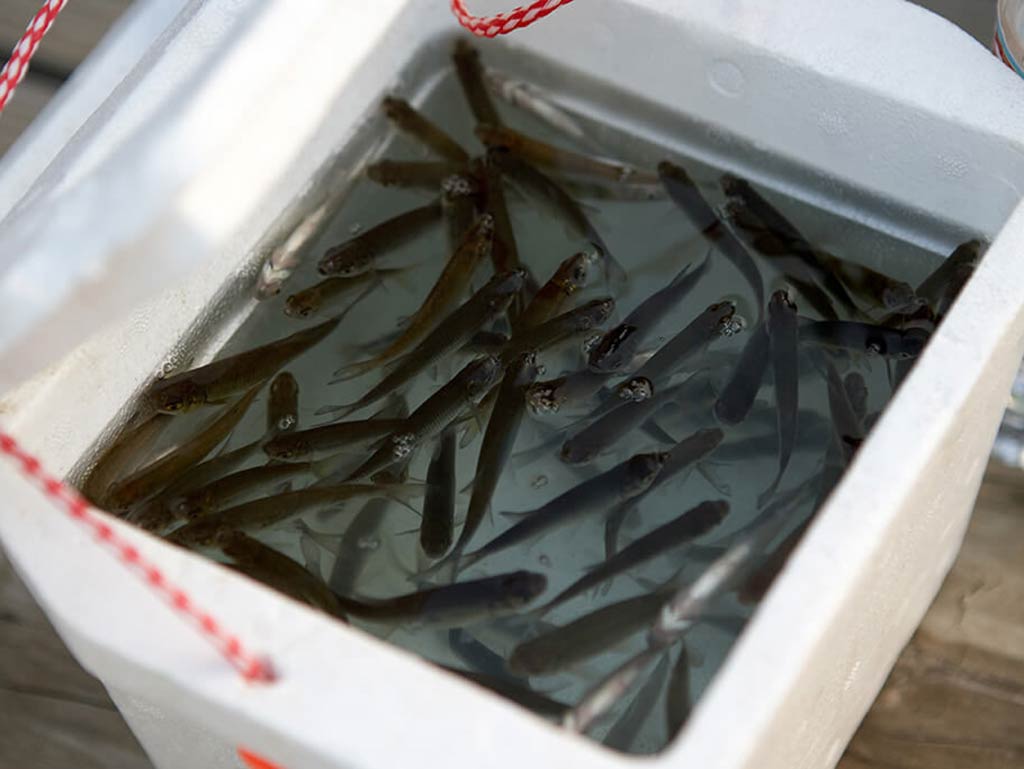
There’s nothing more realistic than, well, the real thing itself! Many bait shops sell live bait which is super convenient. Of course, you can always procure your own on the water. Catching a perch or even a small trout (when legal) and using it for live bait is excellent. Otherwise, look to minnows, shiners, smelt, etc.
Always check the regulations regarding live bait. In some waters, Pike overlap with Trout fisheries where live bait is prohibited. In most Northern Pike locales, however, bait fishing with single or treble hooks is perfectly legal. It’s important to know before you go, regardless.
Soft Plastic Baits
When I think of bait, it involves something that’s alive or once was. But soft plastics have advanced to a point where they really qualify under the broader bait category. They have extremely realistic profiles, movements, and even scents to mimic real food sources. From minnows to frogs and crayfish, there’s always a soft bait to replicate the real thing.
The big advantages of soft baits are their convenience and durability. They’re easy to rig, are always ready to fish, and last much longer than any live or dead bait. If you don’t have time to bother with cut or live baits, stock up on soft plastics.
Lures and Hardware
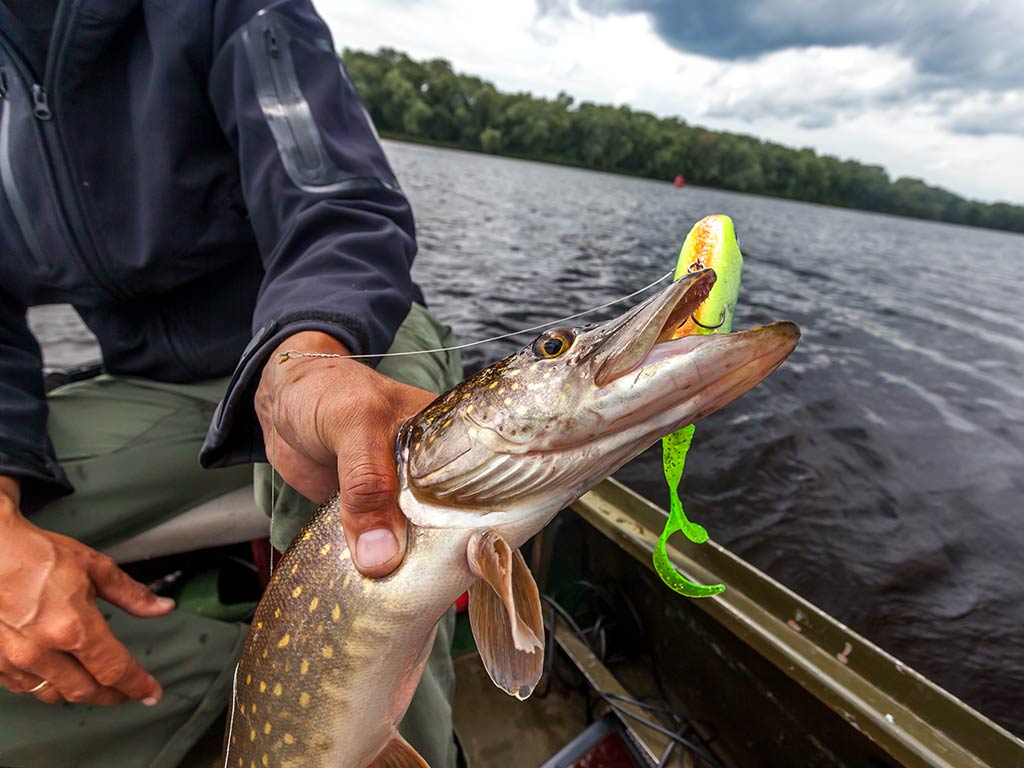
Lastly, lures and hardware are a couple of things you should always have in order to supplement or work in conjunction with baits. Jig hooks, for example, will come in handy while fishing real or artificial baits. Otherwise, carry a selection of crankbaits, jerkbaits, spoons, spinners, and general Pike lures. When the bait has been chewed off your hooks for the day, you can grab a lure and keep on fishing.
Tips for Rigging for Pike
Rigging doesn’t have to be complicated but remember, Pike have sharp teeth. They’ll cut through monofilament (mono) lines with ease, so you should rig with wire leaders. Some folks fish heavy bite leaders (50 pounds or more) but wire leaders are the absolute best in my opinion.
I like to fish a braided line with an Albright knot that runs to a 30 lb mono leader with an additional 2′ wire leader to a clip. You can skip the mono and connect the braid directly to a wire leader or rig it up using any number of techniques based on the lures and hooks you’re using. Having the mono section is nice for stiffness — I use a soft wire that ties in knots like any other line.
You can adjust the poundage based on the environment. I like a 30 lb mono to cover a wide range of fisheries but there are plenty of lakes near my home with smaller Pike. A 15 lb rig and lighter rod is a ton of fun on these fisheries. Think about the largest fish you might encounter and rig accordingly.
Where to Go Pike Fishing
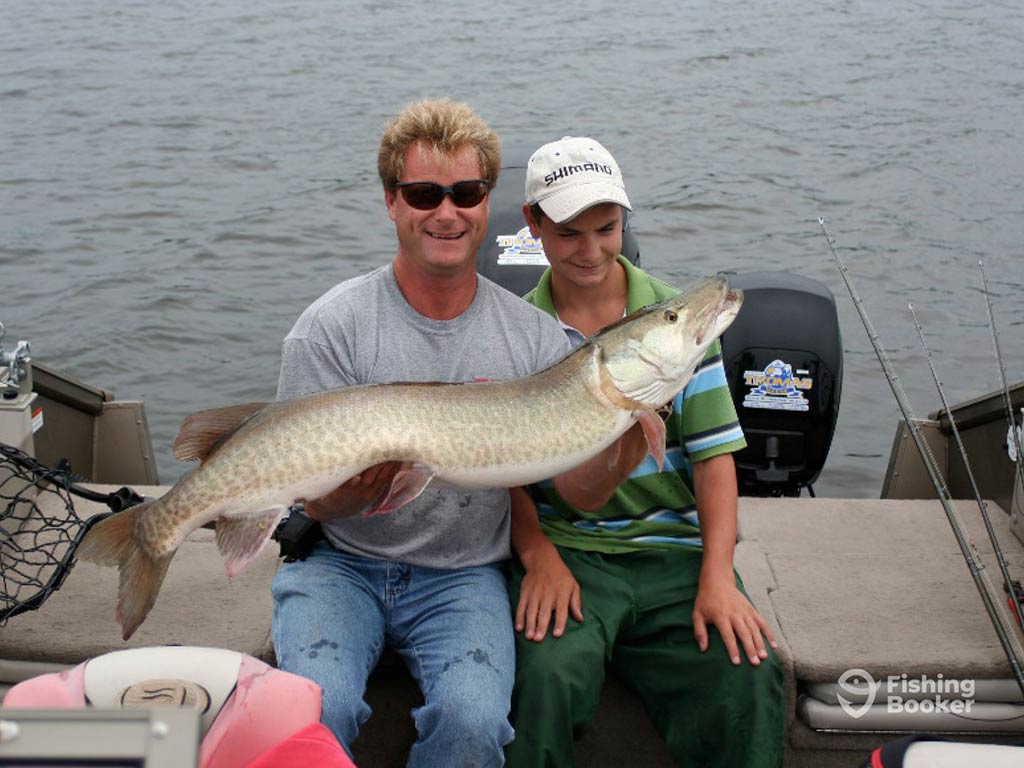
Photo courtesy of Marc Thorpe Walleye and Musky GuideIt’s not difficult to find a Pike fishery. These fish are common across North America and Europe - and beyond. Yes, the northern states and Canada are especially loaded with Pike but you’ll be surprised by the overall range of these fish. They’re invasive in parts of California and prolific in the Rocky Mountain states. My Montana home has Pike in numerous rivers and lakes with some big specimens out there, while Colorado has some excellent fisheries as well.
Alaska, Minnesota, Wisconsin… Just pick a state that isn’t located in the south and you’ll likely find options. The upper midwest and Canada are really prime territories, however. The fly-in Pike trips in Manitoba and Ontario are some of the best opportunities you’ll find anywhere. Pike live in huge bodies of water, small ponds, and rivers. Do some research and there’s a good chance you’ll find a Pike fishery to enjoy without traveling too far.
What baits will be on your next Northern Pike trip?
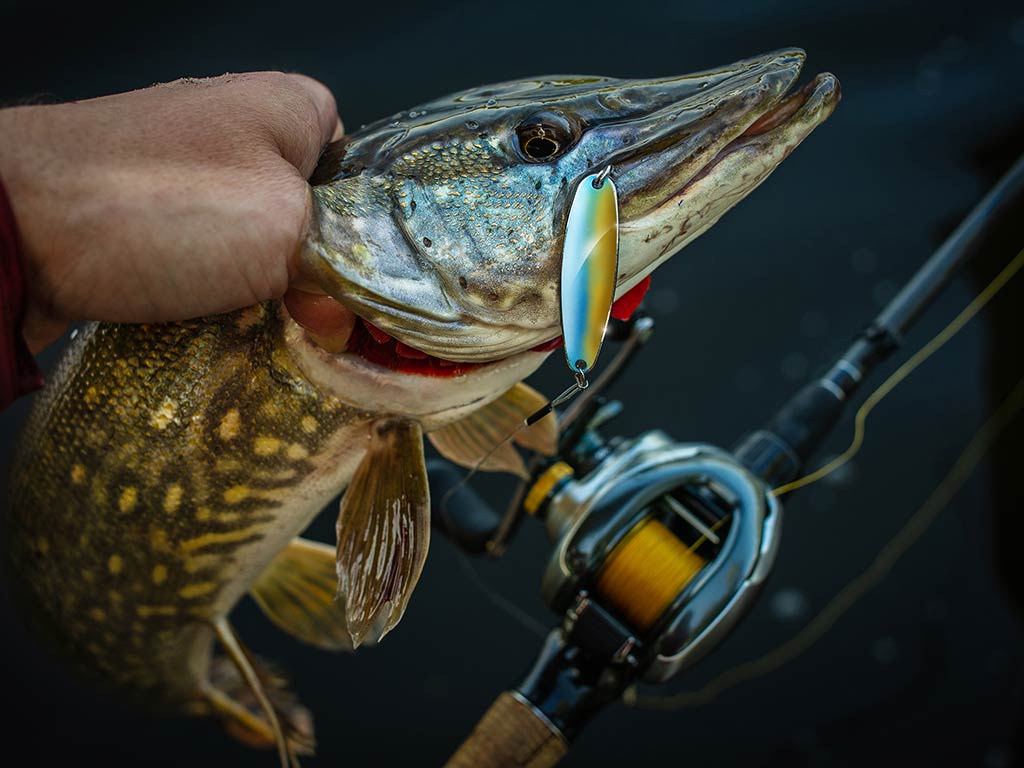
In a nutshell, Pike aren’t often picky and there’s a chance they’ll eat any bait you throw out there. Finding the fish and making a good presentation is the real key to success when Pike fishing. Sometimes you have to go searching for individuals but, other times, they stack up in a small area. It’s time to see for yourself. Grab your favorite Northern Pike bait, rig a hook, and get busy fishing!
Are you a dedicated Pike angler? We’d love to hear about your favorite baits and Pike stories! Chime in to share your strategies in the comments below!
The post The Best Northern Pike Bait: An Angler’s Guide for 2024 appeared first on FishingBooker Blog.
https://fishingbooker.com/blog/northern-pike-bait/
 CampingSurvivalistHuntingFishingExploringHikingPrivacy PolicyTerms And Conditions
CampingSurvivalistHuntingFishingExploringHikingPrivacy PolicyTerms And Conditions
